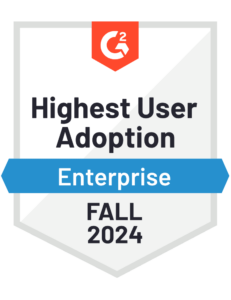In a KPMG survey of 360 senior executives in the manufacturing industry, 74% of respondents indicated that growth would be a high priority in the future, and 31% indicated it would be an extremely high priority. Additionally, over half of the respondents categorized their growth strategy as “aggressive,” and more than one-in-six said their growth strategy would be “very aggressive.”
This survey was taken before the impact of COVID-19. While the pandemic’s effect on the manufacturing industry has been considerable, the resulting vacuum in market availability means manufacturing industries will likely double up on their expansion efforts which presents a unique opportunity.
However, as many countries begin to loosen restrictions with social distancing and other preventative measures, how to best navigate a post-COVID world for manufacturing companies is still being determined. Manufacturing companies have historically focused on making themselves as lean as possible in order to become more competitive. While that approach will certainly be necessary, in order to not just survive, but thrive in the uncertainty that a post-COVID world will bring, manufacturing organizations will need insight into their financial standings and opportunities.
Growth Through the Office of Finance
Since the beginning of the COVID-19 outbreak, offices of finance across every industry have been relied on to be a guiding light in the organization. Logically, this makes sense as the financial information and the accompanying “nuggets of insight” all flow through the office of finance at some point during the Record to Report process. However, the manufacturing industry, for the most part, has not provided its office of finance with the necessary resources to provide that agility and level of insight—especially in comparison to other leading industries.
When the budget season comes around, F&A teams in manufacturing companies are often passed over for the business or automation needs of other departments. This leads to a “do more with less” approach to the financial close in an office of finance that is operating with decades-old technologies and processes. This approach is not only risk-prone due to human error, but its inefficiency is in direct contrast with how the rest of the manufacturing business operates. The manufacturing vertical is keenly aware of the benefits of automation and removing low-value work, but this knowledge has yet to be reflected in the office of finance.
In fact, in 2018, 60% of accountants said they spend too much time on manual, repetitive, and error-prone tasks such as cleaning and manipulating data, and as accountants went remote, those challenges have only increased.
Gaining Insight Through Financial Close Efficiency
The disconnected nature of spreadsheets and the manual processes associated with them inherently silos the financial close process. Accountants are all-too-often stuck performing high-volume, repetitive tasks to the extent that they don’t even have time to collaborate on issues, let alone provide insights effectively.
In order to provide the insight needed for the future of the manufacturing organizations in a post-COVID world, accounting teams need to save time by moving past a spreadsheet-based approach to the financial close process and towards an automated Close solution. By automating repetitive, lower-value tasks, accountants can spend their time where it matters most and provide the insights needed to situate the organization for growth. Organizations that have automated the Record to Report process have achieved the following results that subsequently enable insights to drive business growth:
- 90% reduction in number of accounts to be reconciled
- 99% reduction in preparation time on reconciliations (for reconcilers)
- 75% reduction in time preparing and reviewing journal entries (for preparers)
- 20% reduction in time testing controls
- 30% reduction in time preparing and completing close tasks
- 75% reduction in time for rework
Leading the Charge With Automation
Outside factors that impact an organization’s workload are inevitable. Due to the impact of COVID-19 and the resulting vacuum in market availability, manufacturing industries will likely double up on their expansion efforts. In order to position your manufacturing organization for this opportunity, the office of finance must be equipped with the resources and tools to provide strategic direction and critical insights based on accurate and up to date financial information.
Learn more about how automating the Record to Report process can empower your organization today.
“[With Trintech’s solutions], we’re able to not only see what we’re doing, but when it’s getting completed and where the bottlenecks in the workflow are.” – LKQ Corporation
Written by: Caleb Walter







